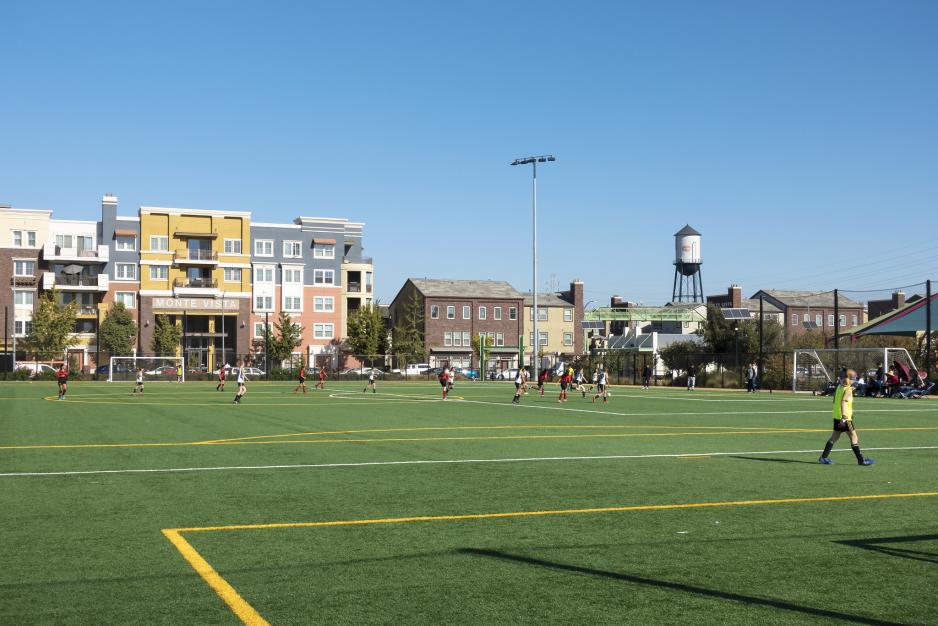Originally invented as a tool to separate housing from hazardous industrial activities, zoning serves as the primary tool that local jurisdictions use to regulate land uses. However, traditional zoning has been made at least partially obsolete by advances in technology and environmental regulation, modern workplace and residential characteristics, and the urgent need to reduce the costs and environmental impacts of long commutes. New and more flexible zoning strategies can accomplish the goal of restricting truly incompatible uses while supporting development that is more sustainable, compact, and supportive of diverse and dynamic lifestyles. This section provides a brief overview of these strategies and how they can be employed.
Mixed-Use Zones
Mixed-use development offers people the ability to live, work, play, and connect all in one place, supporting vibrant neighborhoods. One main goal is generating the flexibility to work from home or close to home, in support of the idea of “15-minute” cities, where residents can find everything they need within 15 minutes of walking or biking.
Smaller Zones for Individual Uses
Specialized zones for specific land uses can help bolster transit use and value in certain cases, such as for educational campuses, healthcare facilities, municipal functions, and even industrial sites.
Transit Zones
Leverage investments in transit infrastructure by concentrating density where its users are best situated to shift from single-occupancy cars to buses and trains. This ties directly into the new 2022 MTC Transit-Oriented Communities Policy guidelines for conformance with regional initiatives.
Community-Centered Development Standards
Ensure that where new construction and redevelopment occur, the needs and goals of communities as a whole are supported. Develop an area-wide and regional approach to planning.
Accessory and Attached Dwelling Unit Incentives
Encourage more accessory dwelling units (ADUs) to increase housing density and affordability by gradually adding new housing in existing residential zones, reducing displacement, and providing housing for a wider range of ages.
Master Plans
Use master plans to rezone an entire area and allow design and use flexibility that meets community planning goals. Planning at a master plan level allows agencies to include community amenities and affordable housing in contrast to the limited context of single-site developments.
Unified Development Ordinance
A Unified Development Ordinance (UDO) is a local policy tool used to streamline the development process, remove inconsistencies, overlaps, and eliminate outdated policies by combining zoning, subdivision, design, signage, flood prevention, grading, and stormwater management regulations in a single ordinance. It puts development requirements and policies in one place to make the process easier for developers, the public, and agencies to understand.
Overlay Zones
Overlay zones have the ability to apply additional standards and criteria for specific properties or districts beyond traditional zoning. Overlay zones may be used to protect or used to promote specific community features or types of development projects, such as affordable housing, mixed use or transit-oriented communities. Overlay zones may be used to help agencies meet specific community goals and address social equity. A major applicable overlay zone is the 2022 MTC Transit-Oriented Communities Policy.
Performance Zoning
Viewed as more appropriate for urban development for transit-oriented projects, performance zoning sets specific and quantifiable regulations for land use. These regulations can mitigate the impacts of new development on adjacent properties.
Case Studies
- Davis, California, USA – Master Planned Development
- Mountain View, California, USA – Innovative Development Standards
